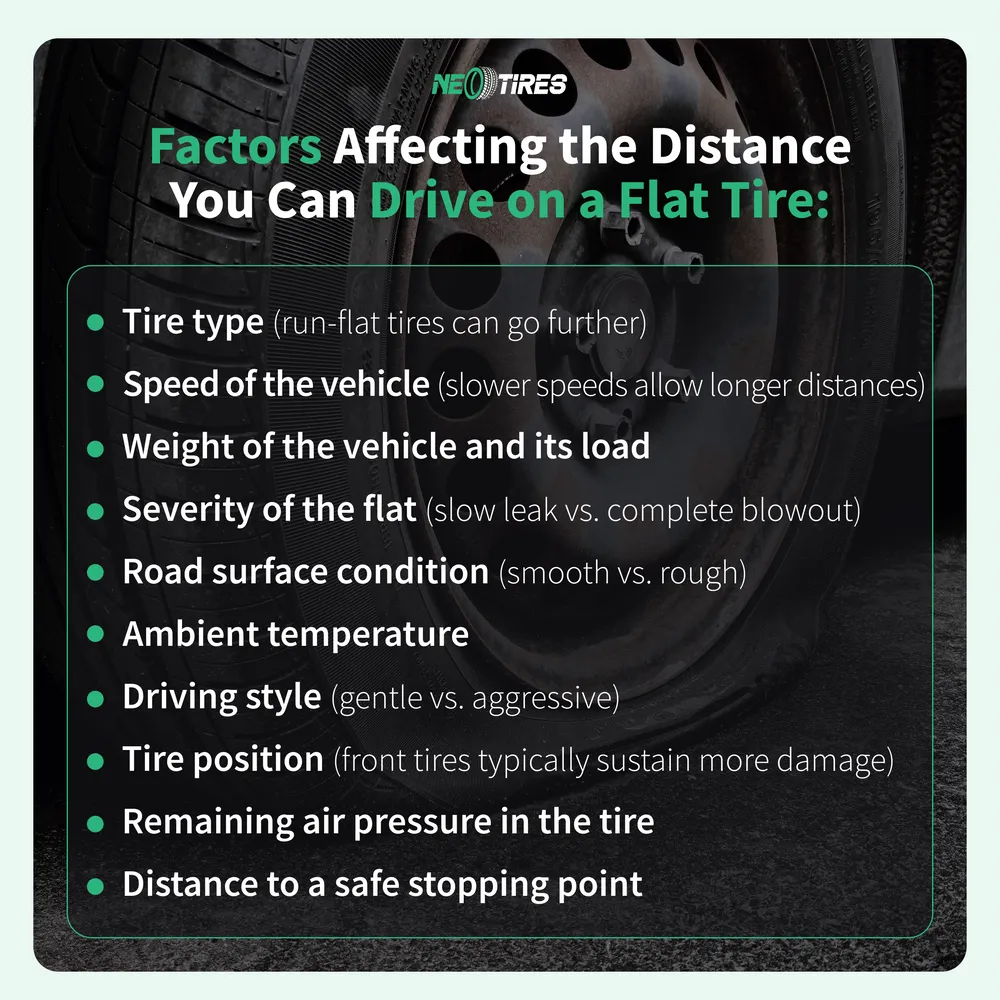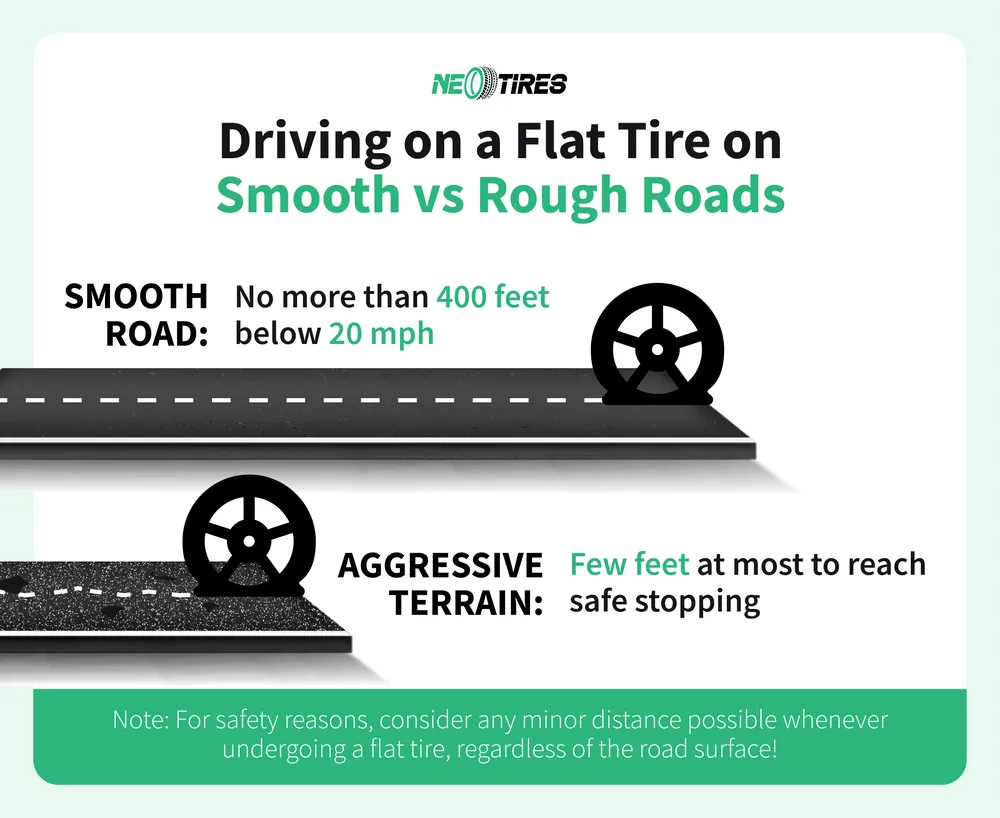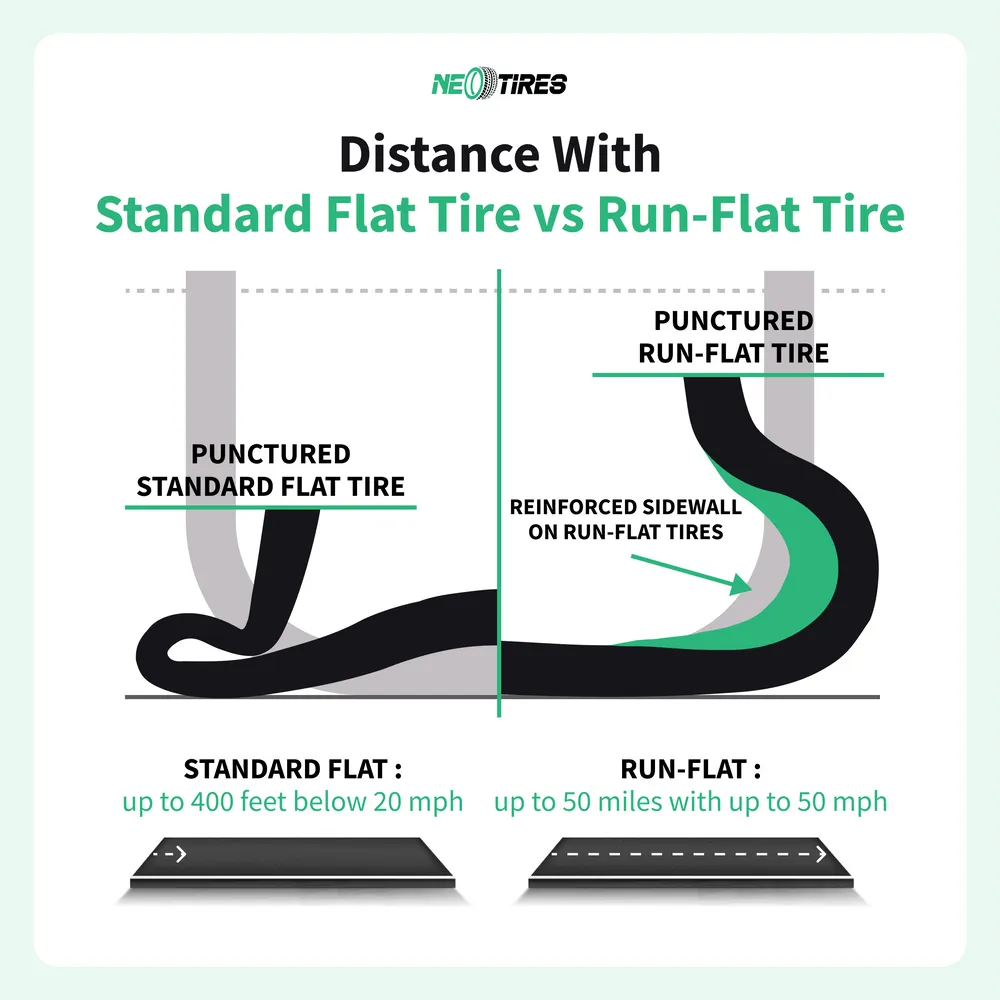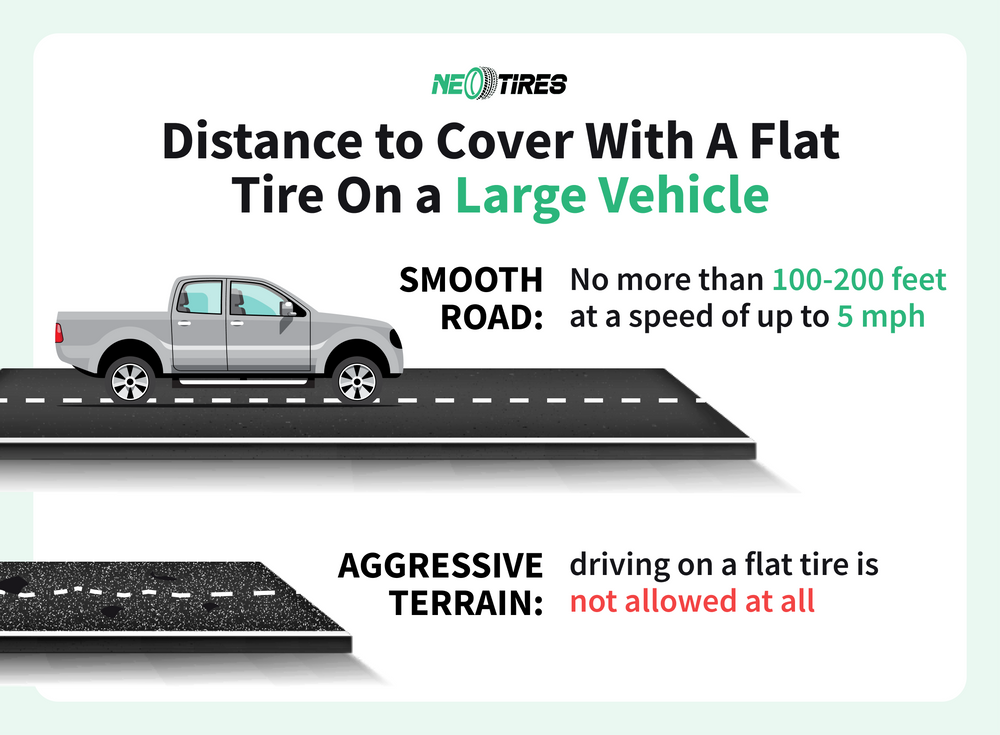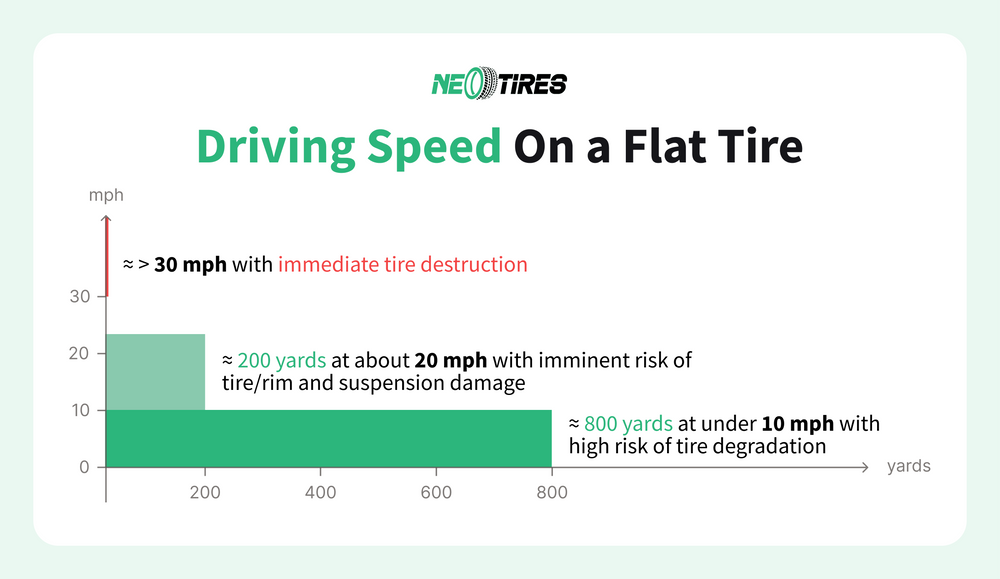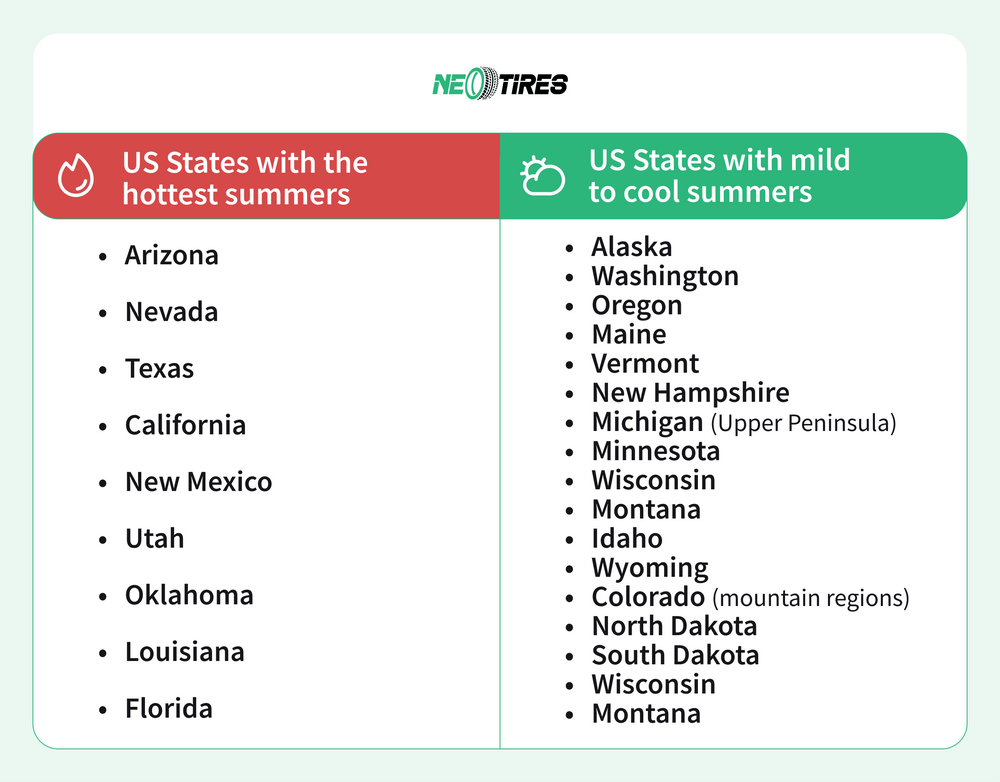A flat tire's driven distance should not exceed a few hundred feet. Most tire makers, including Pirelli and Michelin, recommend against a more extended distance to park your vehicle in a safe area! While doing that, you should only drive slowly, which is no faster than five mph (8 km/h).
Table of Contents
- Factors Affecting How Far You Can Drive On A Flat Tire
- How Far Can You Drive on a Flat Tire Before Damaging the Rim?
- How Long Can You Drive On A Flat on Aggressive Terrains
- How Long Can You Drive On A Flat On Smooth Roads
- Standard Flat Tire VS Run-Flat Tire: Distance
- Flat Tire vs Vehicle Weight
- How Fast Can You Dive On A Flat
- How Far Can You Go With A Flat Tire in Summer?
- How Long Can You Drive On A Flat Tire In Winter?
- How Bad Is It to Drive on A Flat Tire
- What To Do If You Get a Flat Tire?
Factors Affecting How Far You Can Drive On A Flat Tire
The factors affecting the distance on a flat tire include the extent of the damage, the vehicle’s weight, the driving conditions, speed, the type of tire, and the road surface. Driving on a smooth road versus driving on an aggressive terrain with a flat tire can make a huge difference. Driving on aggressive surfaces with a flat tire is likely to impact its integrity severely, so stopping within 30-50 feet would be wise.
The distance can take longer, up to about 200-400 feet, on paved asphalt until you reach a safe parking spot. The exception to this rule is the run-flat tires. These allow you to drive up to 50 miles in flat conditions since their construction stays in shape even after losing pressure.
How Far Can You Drive on a Flat Tire Before Damaging the Rim?
Driving on a flat tire more than 50-100 feet can begin to damage the rim, even at low speeds. You can drive up to 50 feet at under 5 mph with minimal risk to reach the nearest safe spot. Here is an overview of what can potentially happen:
- 0-50 feet at under 5 mph: Minimal risk if only used to reach an immediate safe stopping point.
- 50-100 feet: Increased risk of rim deformation due to direct road impact, especially on rough or uneven surfaces.
- Beyond 100 feet: High likelihood of rim bending, loss of airtight seal, and irreversible structural damage.
- At speeds above 20 mph: Rim damage can occur within a few seconds, as the metal is exposed to vibration, heat, and impact forces normally absorbed by the tire.
Important: Even if the tire appears intact after driving flat, rim damage may be hidden and can lead to wheel imbalance or complete rim failure. Wheel manufacturers and industry experts strongly advise an immediate stop to avoid costly rim replacement.
How Long Can You Drive On A Flat on Aggressive Terrains
Driving on aggressive terrain with a flat tire must not take longer than a few feet at most. The stopping distance should not take longer than to park the vehicle safely. Too much stress, including severe damage to the wheel rim, complete tire destruction, potential accidents, and loss of vehicle control, is likely if driving beyond the recommended limit.
If you have a flat tire on rough terrain, the wisest thing to do is to change it with the spare tire if you have one or call emergency assistance.
How Long Can You Drive On A Flat On Smooth Roads
The distance to drive on a smooth road with a flat tire should not take more than 400 feet for safety reasons. This distance should be enough to drive to a safe area away from road traffic. In exceptional cases (emergencies in high-traffic areas, adverse weather conditions, avoiding dangerous locations), the maximum distance could reach up to half a mile. In such cases, it is essential to maintain a speed below 20 mph to minimize the impact on tire integrity.
Standard Flat Tire VS Run-Flat Tire: Distance
Standard tires have a different construction from run-flat tires. Respectively, the distance you can cover in flat conditions is also different. While the distance with standard tires is limited, run-flats allow you to drive up to 50 miles.
This is because the internal construction of run-flat tires remains in shape even in the absence of pressure. However, for safety reasons, the speed should not exceed 50 mph. A technical inspection of the run-flat tire after 50 miles is recommended for a potential tire replacement.
Flat Tire vs Vehicle Weight
The distance of a heavy vehicle, such as a truck or an SUV with a flat tire, should be shorter than that of a passenger car. Thus, it should not exceed 100-200 feet at a speed not exceeding five mph. This scenario is viable for paved roads exclusively.
Driving on rough terrain with a flat tire on a large SUV is not recommended. The reason is that the vehicle's heavy weight is likely to cause severe and irreversible damage to the tire and the rim at any distance. The flat tire causes uneven weight distribution of the vehicle, which leads to severe and rapid damage.
| Vehicle Type | Max. Distance | Max. Speed | Road Type |
| Passenger Car | 400 feet | Below 20 mph | Smooth/Paved Roads |
| Truck or Large SUV | 100-200 feet | Below 5 mph | Paved Roads Only |
Recommended distances and speeds for driving on a flat tire
Similarly, the extra weight is likely to severely damage the vehicle's internal parts. Safety risks increase as heavier vehicles are much harder to control, especially with a flat tire.
The wisest thing to do whenever a large vehicle has a flat tire is to stop immediately and call for professional assistance if a spare tire can be replaced.
How Fast Can You Drive on A Flat Tire
Driving speed is a relevant factor in determining how far you can go with a flat tire. The slower you drive, the more room you have for longer distances. Driving at a speed under 20 mph reduces stress on the tire, minimizes heat build-up, increases control over vehicle handling, and cuts the damage to the wheel rim.
Conversely, a speed higher than 20 mph accelerates severe damage to the tire, increases friction, amplifies the risk of losing control, affects other components, and reduces the degree of safety.
You could technically drive up to 800 yards at a speed of up to 10 mph with a flat tire. The distance drops to a maximum of 200 yards at a speed of 20 mph. Likewise, the risk of immediate tire degradation is very likely at a speed of 30 mph and above.
| Speed | Maximum Distance | Effect on Tire and Vehicle |
| Up to 10 mph | 800 yards | Low heat build-up, low stress on tire and rim |
| Up to 20 mph | 200 yards | High stress on the tire, high risk of damage |
| 30 mph or above | Not recommended | Rapid tire degradation, increased safety risks |
Speed vs. Maximum Distance with a Flat Tire
A critical note is that these estimations do not ensure complete safety. You should only consider them for absolute emergencies if an immediate stop is not possible.
How Far Can You Go With A Flat Tire in Summer?
The distance to drive on a standard flat tire in summer is between 0 and 600 feet maximum. It depends on how hot the US area is where you live, and how urgent it is to cover this distance.
If necessary, you should drive no more than 600 feet at a minimum speed of 15 mph. However, even this distance can be risky in extreme temperatures due to factors such as tire-softened rubber, heat buildup, and expanded air.
Tire specialists recommend avoiding driving on a flat tire for safety purposes in states like Florida, Texas, Arizona, Nevada, and Missouri. These areas record extreme temperatures, which puts driving on a flat tire at any distance at risk.
In states with mild summers like Washington, California, and Oregon, driving on a flat tire at a minimal distance with a minimal speed might be accepted in emergency scenarios. Check below the states with the hottest and mildest summers across the US to estimate the driving distance allowed on a flat:
How Long Can You Drive On A Flat Tire In Winter?
You can technically drive on a flat tire a little longer in winter than in summer, up to half a mile. Yet, it is still a risk that should be avoided if possible. If necessary, the speed should not exceed 20 mph to avoid strenuous impact on the tire.
While the risk of heat build-up is less likely due to colder temperatures, driving with a flat tire in winter still presents several challenges. These include less vehicle control on slippery surfaces, poorer traction due to the deflated tire, and longer braking distances. Studies and tests have shown that a flat tire can increase braking distance by as much as 20-50% or more, depending on the specific circumstances.
Considering those, the safest option is to pull away from traffic and call for roadside assistance if tire replacement is not possible.
How Bad Is It to Drive On a Flat Tire
When driving too far on a flat tire, six potential outcomes are likely: irreversible tire damage, suspension issues, rim damage, loss of vehicle control, brake system damage, and low fuel economy.
Irreversible Tire Damage
High friction and amplified heat buildup will likely warp the tire's components. In addition, the sidewalls can shred, destroying the tire's integrity.
Suspension System Issues
Suspension components, including strings, shocks, and struts, might suffer severe damage. The stress on these components leads to premature replacement, while the wheel alignment can suffer critical deviations.
Wheel Rim Damage
Driving too far on a flat tire is likely to cause rim cracking, braking, or bending. Addressing this issue is often expensive as it requires complete rim replacement.
Loss of Vehicle Control
Because of the uneven weight distribution, the vehicle becomes unstable. Traction becomes significantly poorer, which can lead to unpredictable handling. Similarly, the steering response delays significantly, especially during corners and at higher speeds.
Brake System Damage
Direct contact between the rim and brake rotors can cause severe damage to the latter. Similarly, a flailing tire can cause the brake lines to get too close to the wheel, which could also cause serious damage.
Fuel Efficiency Reduction
A flat tire has significantly higher rolling resistance. The more you roll on it, the more fuel you burn.
What To Do If You Get a Flat Tire?
The safest things to do when getting a flat tire include the following:
- Seek a safe place to pull over.
- Turn on your hazard lights to remain visible to other traffic participants.
- Replace the flat tire with a spare one, if possible. In many cases, you can resolve the issue on the spot by following proper procedures. For step-by-step guidance, see our article on How to Change A Tire Yourself
- Call for road assistance if there is no spare tire or you can't make it on your own.
- Don't consider further driving on a flat tire as an option.
Don’t Risk It – Replace Your Tires Before It’s Too Late!
Even if you take all the necessary safety precautions when driving with a flat tire, driving on it can sometimes cause severe damage to the suspension and wheels. If your tires can no longer be repaired, it's time for a replacement.
NeoTires offers a wide selection of high-quality tires to keep your ride smooth and safe. Explore our tire catalog or contact us for guidance. Our assistants will help you find the best fit for your needs and expectations.
Drive safe and choose your tires wisely!





